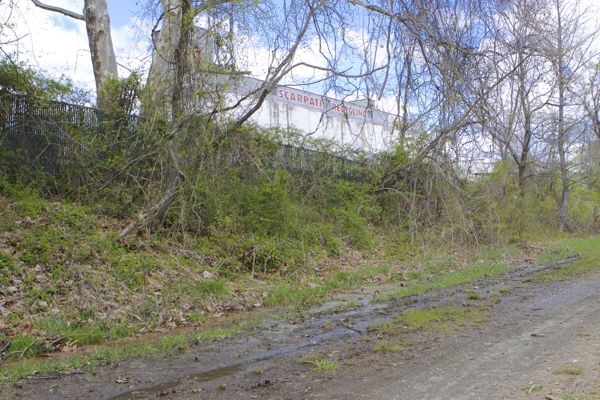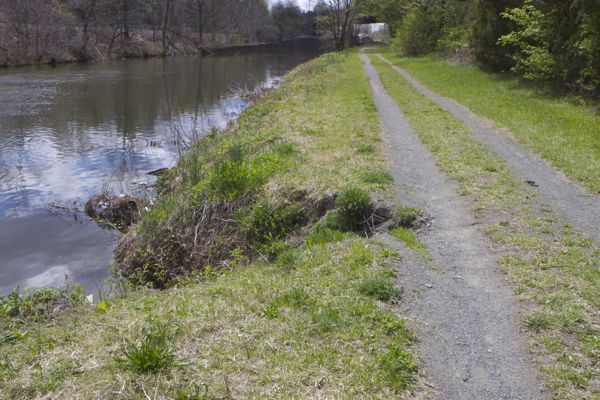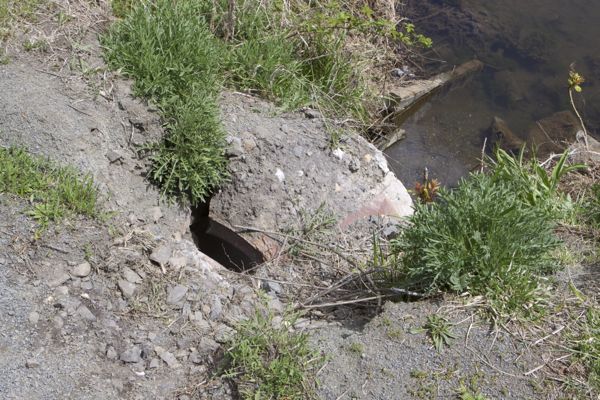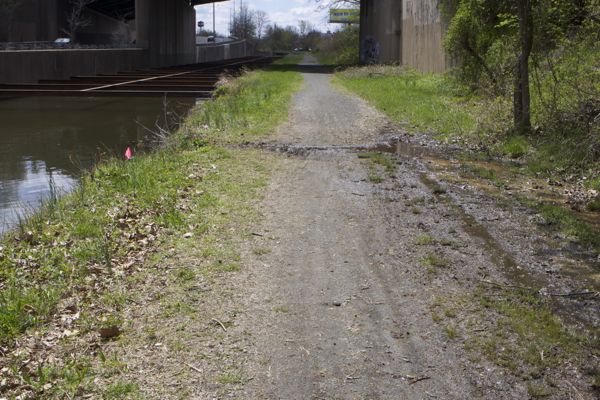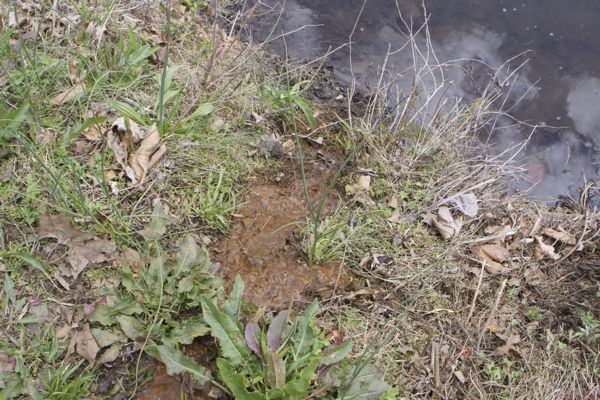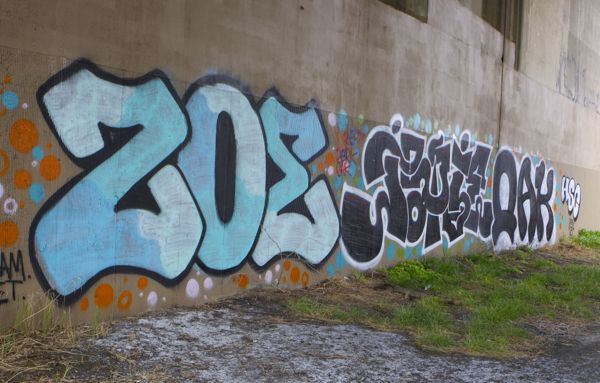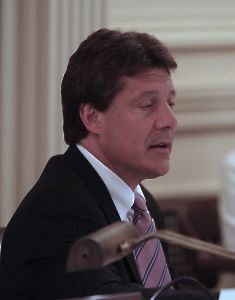The Pinelands Commission’s Policy and Implementation Committee met on Friday to discuss several matters (agenda and packet). [You can watch hearing here].
After the meeting, the new Ad Hoc Committee to reform the MOA process met for the first time. Here’s a quick summary of what went on.
1. Black Run Watershed Plan
This plan is important beyond the Black Run watershed because it will define and serve as the Commission’s model for sub-regional planning. The Commission is calling this a “pilot project”.
[What this sub-regional planning model boils down to is this: in order for the Commission to redesignate lands in a way that reduces development potential, new growth must be provided to compensate property owners, regardless of whether the development potential was “realistic” and “investment backed” and regardless of whether the new growth area is appropriate (why else waive T&E survey requirements in the new growth area? Why ignore restrictions on wastewater infrastructure in forest areas?). In this case, the existing rural development area land that would be redesignated as new forest area is environmentally constrained and would only support 70 clustered units (max.) Yet, the new 150 acre growth area would allow 325 units! An almost 5 -1 ratio!]
Conceptually, the plan is seriously flawed because it is a trading scheme and is not driven by the Pinelands Act mandate to preserve Pinelands resources and only allow “compatible development” based upon scientific criteria and resource protection standards.
Serious flaws in the plan include:
- fails to apply environmental constraints and thereby greatly overestimates development potential of the lands targeted for preservation;
- fails to consider environmental constraints on lands targeted for development;
- waives T&E survey requirements and PDC’s for lands targeted for development;
- fails to consider water supply and wastewater infrastructure capacity or impacts;
- fails to consider impacts of development on Pinelands periphery – e.g. new growth area located adjacent to preserved forest.
Given the significance of this plan as a model and the serious flaws, I can’t understand why I am the only one who has even commented on it.
I wrote about the plan previously (see this for details).
It is a complicated plan, but it basically involves re-designation of about 4,000 acres of forest from rural development area to forest area, reducing allowable density and development potential, and creating a new 175 acre regional growth area to build some 325 units. The new growth area is designed to compensate landowners for the development potential that would be reduced by the forest area re-designation.
Last time, the plan was tabled and staff was asked to provide an additional briefing on the development of and elements of the plan.
Keep in mind that at the prior meeting, staff found that
- the current rural development designation “does not reflect the ecological value of the area”
- the current rural development designation ”continues to create unrealistic development expectations“
- a Forest Area resignation would reflect the current CMP standards for Forest Area
Yesterday, staff provided an historical overview of how the Evesham – Medford plan – which is the basis for the current plan proposed by staff – originated.
The 2006 Evesham-Medford plan was subsequently adopted by Evesham in its Master Plan and approved by the Commission via Resolution, but it was never implemented in Evesham zoning ordinances or CMP changes. There was a brief discussion of the lack of progress in implementing the plan.
It was obvious that the Evesham- Medford plan was a response to development proposals at the time that threatened to fragment forests and degrade water quality.
Given that development pressure at the time (AKA “investment backed expectations”), the Commission was forced to compromise and come up with a plan that allowed property owners to profit from the allowable development potential.
But that hot real estate market does not exist right now and there are no pending development applications before the Commission. The Commission is not under pressure to compromise and therefor should base any new plan on existing criteria and science, not development expectations that drove the 10 year old Evesham-Medford plan.
Commissioner Ashmum supported the plan. Commissioner Prickett noted the plan was funded by the ‘prestigious” Wm. Penn Foundation. Commissioner Galletta raised several concerns and opposed inclusion of the on-site wastewater system option to serve new development in the new designated growth area.
After a brief discussion and without public comment, the Committee approved staff’s recommended “Option 3”, but without the option for an on-site community wastewater system with about a 90,000 GPD capacity (according to Larry L, I could not find that number in the plan itself) (see staff’s presentation). That plan also would waive T&E survey requirements and Pinelands PDC credits in the new growth area.
The only wastewater option would be via a pipeline connection to Voorhees or Evesham sewer treatment plant – both not very likely and not cost effective.
Both wastewater options would be inconsistent with restrictions on wastewater infrastructure in Forest Areas. So the plan is inconsistent with the CMP!
My sense is that the Commission thinks that there are so many barriers to development of 325 units in the newly designated growth area that it will not happen, meanwhile the forest re-designation will.
This is a dishonest game.
The plan is flawed and a lousy deal – I support option 2, which is to correct an historical error and re-designate the land as Forest area.
There is no need to “balance” this re-designation with new growth because the forested lands should never have been designated rural growth area to begin with. There is no need to “compensate” landowners because development expectations are not reasonable as a result of environmental and regulatory constraints on this land.
Those forested lands should never have originally been designated rural development area. Based on current Pinelands criteria, they meet Forest Preservation area standards.
The land development potential in the currently designated rural development area was overestimated as 325 units. However, environmental and regulatory constraints – wetlands, stream buffers, and T&E habitat – would not allow anywhere near that amount of development.
I criticized the plan “horse trading” not planning, because the primary objective is to create a development trading scheme to compensate landowners, not preserve Pinelands resources and allow compatible development based on existing scientific criteria of ecological value.
The next step appears to be a CMP amendment authorizing this plan as a pilot program. We’ll keep you posted.
2. Independent review of T & E surveys
There was a good discussion of flaws in existing T&S survey requirements with respect to the role of consultant’s for developers. Under current requirements, those surveys are prepared by consultants who work for the developers, raising conflict of interest and scientific bias concerns.
PPA and NJ Audubon and others are seeking to have independent experts, who report to the Commission not the developer, prepare or review T&E surveys, and have the applicant pay for those services, much like the current practice of local development reviews where developers pay into an escrow fund to support independent reviews.
Staff was criticized for working to find ways to block these reforms instead of working to make them happen. No decisions were made or commitments to future action.
3. MOA reforms – just don’t mention “South Jersey Gas pipeline”
The new Ad Hoc MOA reform Committee met for the first time.
The good news is that Chairwoman Ashmum reversed her prior prohibition on public comment.
The bad news is that Chairwoman Ashmum seems to think that these reforms can be accomplished without rule making. Here’s what transpired:
Staff provided a briefing on the origin and purpose of the MOA mechanisms. The MOA was included in a package of 1994 rule amendments. The objective was to make it easier to obtain approval for projects that conflicted with the CMP but served a public purpose. Historically, those kind of projects were not able to meet the waiver of strict compliance standards, which require demonstration of a “compelling public need” and that there be “no alternatives”.
Several members outlined their concerns and there seemed to be a consensus that the focus of reforms be on:
- provide the Commission with early involvement
- limit eligibility to public entities;
- establish better definition and restriction of “public purpose” to the Pinelands;
- extending the public comment period; and
- developing science based standards to enforce the current “equivalent protection” standard.
There was no agreement on whether “public utilities” or State entities like BPU representing a private for profit like South Jersey Gas, could be eligible for a MOA.
Commissioner Avery objected to any rule making.
Commissioner Lloyd suggested that there may be legal problems in trying to implement any new MOA scheme without adopting them procedure as a regulation.
I spoke and supported the overall objectives, but added that
1) the Commission should impose a moratorium on any consideration of any MOA’s pending adoption of new rules to strengthen current MOA regulations, like the DRBC moratorium on review of fracking applications; and
2) strongly disagreed with Chairwoman Ashum’s intent to avoid regulations – the MOA is a regulatory review procedure, so new rules are required (as Lloyd suggested).
3) I objected to the Committee’s plan to meet in closed session with Pinelands Commission staff.
The Committee seems to be bending over backwards to avoid admitting that mistakes were made during the SJG MOA and to block the public from criticizing that process or ED Wittenberg & Counselor Roth’s actions – or opening Pandora’s Box by discussing interactions with the Governor’s Office.
4. DEP addition of 13,000 acres in new sewer service areas
Fred Akers spoke during the public comment period and raised concerns about DEP’s proposed approval of County Water Quality Management Plans that would add 13,000 acres of new sewer service areas (SSA) in the Pinelands (see the DEP public notice).
Fred said he had reviewed portions of the Atlantic County maps and found cases where the DEP would allow sewers in forest and other protected areas.
Staff immediately interjected and contradicted Fred’s claims – staff said they had done detailed reviews and that all new SSA are limited to designated growth areas that allow sewers under the CMP.
Fred disagreed and urged the Commission to loook closely at the SSA maps with respect to CMP requirements.
The DEP will hold a public hearing on May 13 at the Pinelands Commission building.
I was blown away by this and the fact that Fred had to bring the issue to light during a public comment period.
The staff never, to my knowledge, discussed this or even mentioned it as a heads up to Commissioners.
Unreal.
I spoke briefly to say that I was blindsided by this and although did not have the opportunity to look at the SSSA maps, I raised concerns about the Christie DEP’s statewide policy to increase the size of sewer service areas to promote development, including revising SSA maps to include environmentally sensitive lands that previous DEP administration’s had eliminated from SSA’s.
More to follow.
